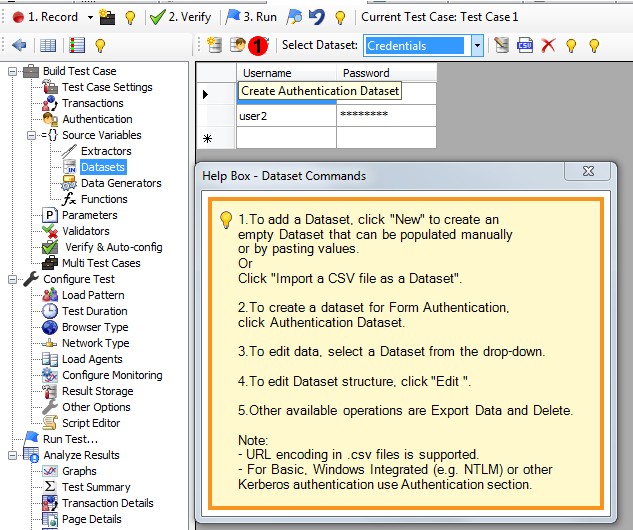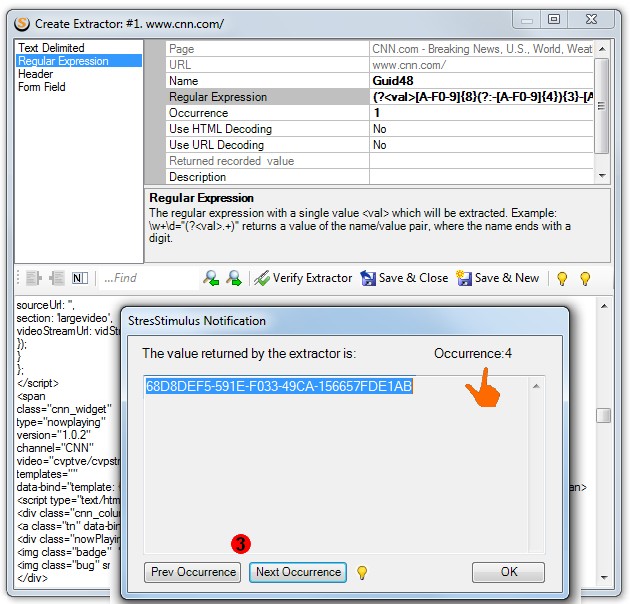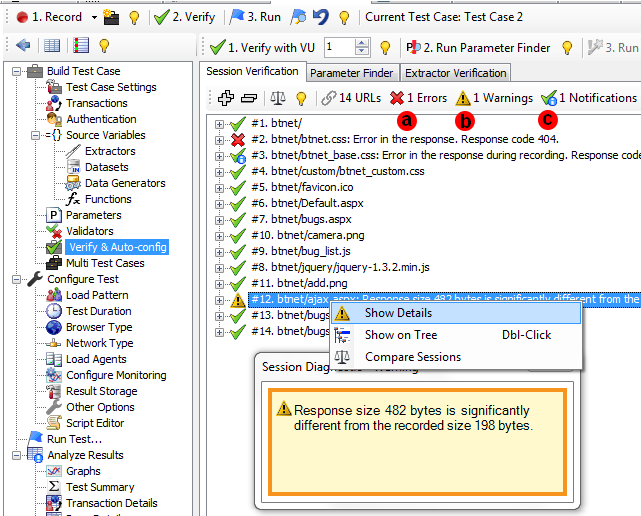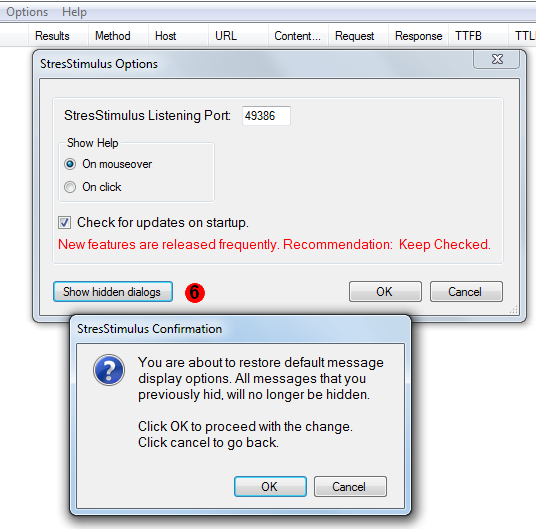Update #3 released today will be the last update before the final 3.0 release, scheduled in two weeks. The following new features and enhancements are added:
1. Forms authentication dataset in one click. If you want to emulate virtual users utilizing different credentials, you need to use a data set storing usernames and passwords to parameterize login requests. You can create the Authentication Dataset by clicking a button on the toolbar in the Datasets section. If your authentication process includes additional properties, such as security questions, you can edit data set structure by adding additional fields. Populate the authentication dataset by entering data, pasting data (from Excel) or opening a CSV file.

2. If you are located in the Authentication section used to configure Windows integrated authentication (not forms authentication), then click Go to Forms Authentication button to navigate to the datasets section.

3. "Occurrence" property of the Extractors - easier configuration. Text Delimited and Regular Expression extractors define a rule of searching a value in the response. If more than one value can be found, the Occurrence property of the extractor must be properly set. Click Next Occurrence / Previous Occurrence to find next/previous value. When you found a desired value of the extractor, click OK. The Occurrence property of the extractor will be properly adjusted.

4. More complete reporting of the Verify process. During the Verify process, a session can receive one of 3 flags
a. Error - sessions with errors related to the test configuration. Test case should be configured to eliminate errors. Try using Parameter Finder.
b. Warning - sessions with issues that may or may not be related to the test configuration. Try using Parameter Finder to eliminate or reduce number of warnings. Inspect remaining warnings to make sure that they are not caused by the test configuration.
c. Notifications - sessions with issues unrelated to the test configuration. Notifications can be rectified by refining your application, for example, adding a missing image. Notification conditions encountered during the test run are not reported as errors.

A diagnostic message is created for every flagged session. Below are the examples of the diagnostic messages
Flag type
|
Diagnostic message
|
Conditions / Recommendations
|
Error
|
Error in the response. Response code XXX
|
Recorded response was OK.
Replayed response has an error.
|
Error
|
Validation Rule violation
|
Custom validator failed.
|
Warning
|
Replayed request was not authenticated.
Check Test authentication settings.
This can be normal If subsequent requests are authenticated.
|
Recorded response was OK.
Replayed response is 401 Unauthorized.
|
Warning
|
Response code does not match the recorded code.
|
|
Warning
|
Redirect to a different URL.
|
|
Warning
|
Response size {0} bytes is significantly
different from the recorded size.
|
Recorded and Replayed response size off by
more than 50%. This can be OK, but should be checked
|
Notification
|
Error in the response code {0} during recording.
This error is unrelated to load testing
|
Recorded response has an error
|
Notification
|
The resource was cached during the Test Case recording
(response code 304) and not cached during the replay
(response code 200).
|
Consider:
- Clearing the browser cache and re-recording the Test;
- Enabling cache control emulation in StresStimulus;
or ignore this warning.
|
Notification
|
The resource was not cached during the Test recording
(response code 200) and cached during the
replay (response code 304).
|
Consider:
- Changing New Users to 0% or
Disabling cache control emulation in StresStimulus.
|
Notification
|
First request in the test case is not primary.
The beginning of the test case may be missing.
|
Consider recording the test case using IE recorder.
|
5. Parameterizing tokens in binary requests, including Adobe AMF format, used in flash and AIR applications. Parameterization editor now supports parameterization of textual tokens embedded into the binary requests. For example, if a binary request to an Adobe flash application in AMF binary format contains a dynamic token, it can be parameterized using any StresStimulus variable such as extractor, dataset or data generator.
6. Restoring default message display options. Now you can as early display messages that you previously hid by checking " Don't show again" box. To do so, in StresStimulus options, click Show hidden dialogues button.

7. Increased number of virtual users in the free version. Users who prefer to use a free version of StresStimulus now can emulate up to 500 VUs. In the previous versions only 100 VUs were allowed.
To navigate to other parts of the v3.0 release notes, click the links below: